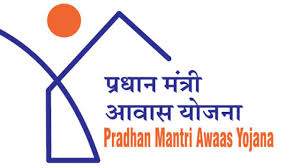Some of the key amendments from a personal tax perspective are as follows:
Revamp of the New Tax regime:
A new optional tax regime was introduced a few years back with lower tax rates with almost no/ minimal exemptions/ deductions from income.
In order to increase the adoption rate among taxpayers the following reliefs were proposed in the optional new tax regime:
* The income tax rebate limit has been increased from the existing income of INR 5 lakh to INR 7 lakh per annum for resident individuals.
* The basic exemption limit under the new tax regime has been increased from INR 2.5 lakh to INR 3 lakh.
* The income slabs and applicable rate of tax have been changed as follows:
* Standard deduction of INR 50,000 has been extended to the new tax regime as well.
* Currently, the surcharge for income exceeding INR 5 crore is as high as 37 per cent of the tax amount. Under the new tax regime, such surcharge for income exceeding INR 5 cr has been proposed to be reduced to 25 percent. This makes the maximum marginal rate under the new regime as 39 per cent as compared to 42.744 per cent under the old regime.
* It is proposed that the new tax regime shall be the default tax regime. In case, the individual opts for the old tax regime, the individual can do so by exercising in the prescribed manner.
Considering the above, one may think the new tax regime may be beneficial to taxpayers at large. However, it depends on the income and claim of deductions / exemptions from income of the individual. Where there is lower / Nil deductions and exemptions, the new tax regime should be more beneficial to the taxpayer. Whereas for an individual with higher income and eligible deductions / exemptions, the old tax regime may be more beneficial.
As an example, individuals with gross salary income upto INR 7.5 lakh would opt for the new tax regime as that would result in a NIL tax liability.
For individuals with gross salary income in the range of INR 7.5 lakh to INR 15.5 lakh, the choice of the tax regime would depend on the quantum of deductions that can be additionally claimed under the old regime. As an example, if an individual has gross salary income of INR 9.5 lakh – he/ she would have a lower tax liability under the old tax regime so long as the exemptions/ deductions allowed under the old regime are at least INR 2.87 lakh.
Similarly, from individuals with gross salary income in the range of INR 15.5 lakh to just about INR 5 crore, the tax liability will continue to be lower under the old regime if the exemption/ deductions are at least INR 4.25 lakh.
For individuals above INR 5 crore of gross salary, the reduction in the rate of surcharge from 37 per cent to 25 per cent will make the choice slightly more tilted towards the new tax regime – however, once again subject to quantum of deductions available under the old tax regime.
While the individuals currently have an option to choose between the old tax and the new tax regime, it appears that the Government’s agenda is to move to one simplified tax regime.
Deduction from Long term Capital Gains:
A limit of INR 10 cr has been proposed on the maximum deduction that can be claimed under section 54 and section 54F on long term capital gains being reinvested in a residential property (subject to satisfaction of other conditions). This has been incorporated by limiting the cost of acquisition of the new property in the deduction calculation to INR 10 crores. This will have a large impact on high-net-worth individuals/ promotors of start-ups etc. who would have substantial capital gains and are planning to invest the same in property.
Taxability of Maturity proceeds from Life Insurance Policies:
It is proposed to tax the maturity proceeds from a life insurance policy (other than a Unit Linked Insurance Policy (ULIP)) issued on or after 01 April 2023, if the aggregate annual premium (on all policies except ULIP) exceeds INR 500,000 in any of the Financial Year (FY) during the term of any of those life insurance policies. Such maturity proceeds net of premiums paid would be taxable as income from other sources in the year of receipt. Any premiums claimed as a deduction earlier will be added back to such income. Further, such income is proposed to be exempt if the same is received on the death of the insured person.
Enhancing of Tax Collection at Source (TCS) rates for specified remittances:
It is proposed to increase rate of TCS as mentioned below with effect from 1 July 2023:
* from 5 per cent of the amounts / aggregate amount exceeding INR 7 Lakh to 20 per cent without any threshold limit in case of remittance under Liberalized Remittance Scheme (LRS);
* from 5 per cent to 20 per cent on overseas tour package.
















